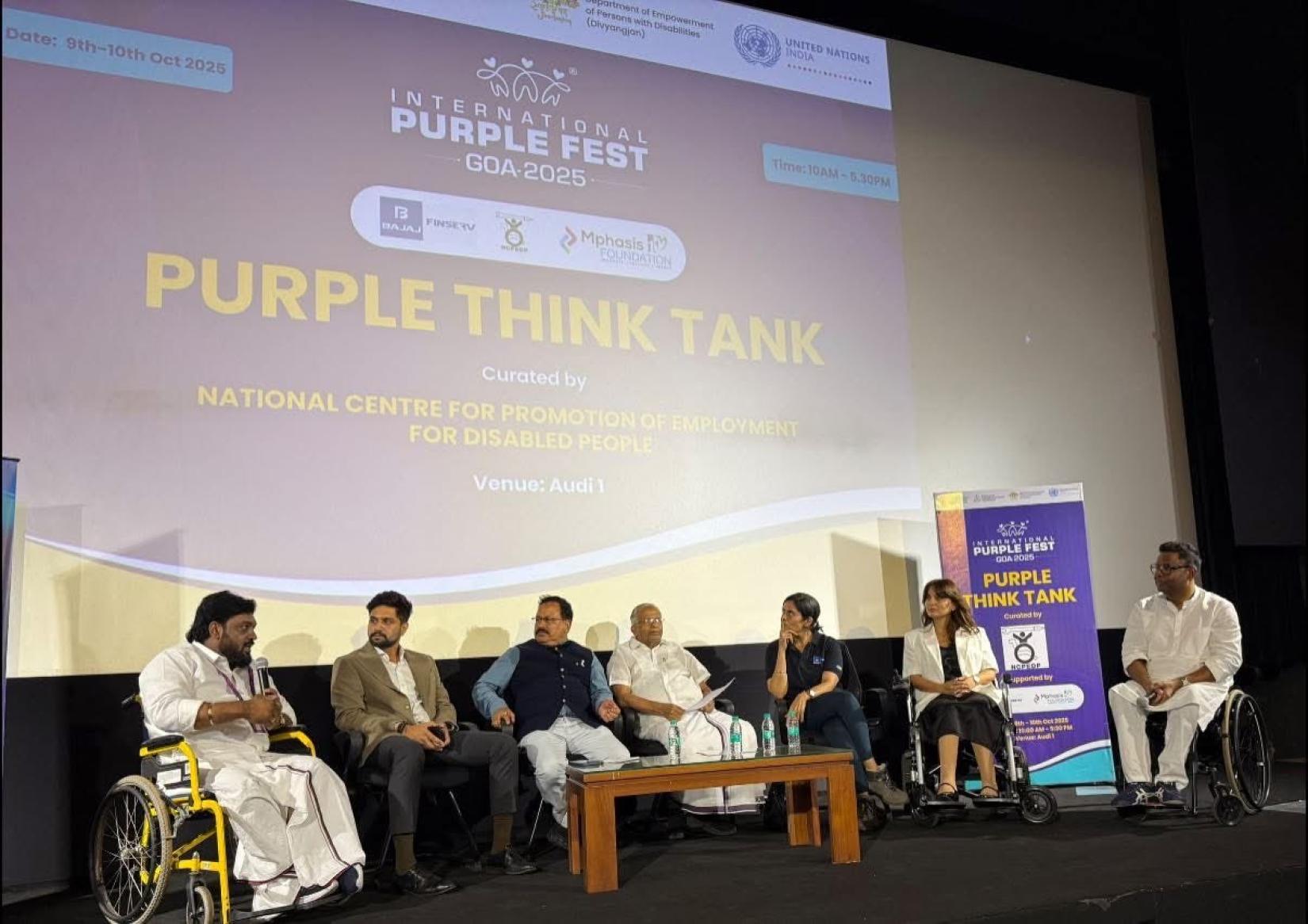Counting everyone, caring for all: Why inclusive censuses power disability rights, health equity, and dignity

International Purple Fest 2025
The ballroom in sunny Goa wore a cheerful shade of purple as delegates from nearly 15 countries gathered under the banner of the International Purple Fest 2025. It was not just another policy meet. The music, the laughter, the art on the walls, the excitement, all of it stood testament to the power of inclusion and diversity to build a better world for all.
Amid the applause came a hard conversation: the world still doesn’t know how many of its citizens live with disabilities.
According to the World Health Organization (WHO) Globally, one in six people - over a billion human beings - live with some form of disability,
Yet governments around the world continue to undercount. India’s own official statistics report just 2.2 percent, a number experts say conceals millions because of stigma, narrow definitions, and outdated survey tools.
“Without accurate data, even the best laws remain empty promises,” said Dr. Mohummed Asheel, WHO’s National Professional Officer for Disabilities and Rehabilitation in India. “We have policies, but we cannot plan rehabilitation or health services without knowing who and where people are.”
Dr. Asheel recalled Kerala’s 2016 disability-specific census - an experiment that introduced geo-tagging and individual care planning. “We learned that data can save lives,” he said. “During the 2018 floods, the ability to locate people with specific disabilities made rescue more effective. Imagine if every country could do that in their next census.”
That idea resonated far beyond India. Yonten Jamesho, Program Officer from Disabled People's Organization of Bhutan (DPO Bhutan) described how his country uses the philosophy of Gross National Happiness to weave inclusion into policy. “Counting is not just arithmetic,” he said. “It tells us whether happiness is equally shared. We follow the Washington Group’s international questions so our data can be compared globally. If India now counts 21 disability types, that sets a model we want to follow.”

Across sessions, UN agencies echoed the same theme: a data revolution for inclusion.
The UNICEF panel on children’s rights added another missing layer. Vandhana Khandari, Child Protection Specialist at UNICEF India, spoke about the invisibility of children with disabilities. “Globally, we estimate that children with disabilities face up to three times higher risk of violence and neglect,” she said. “In South Asia, many are still not even counted. A child unseen in data is a child unseen in life.”
She described pilot projects in Uttar Pradesh and Chhattisgarh, where volunteers now identify children early, link them to services, and feed the information back into district planning. “This is what inclusive enumeration looks like,” she said. “Counting becomes care.”
From the Maldives, Fathimah Ibrahim, President of Disability Council and a two-time Paralympian, called for stronger, connected disability databases. “Our islands are scattered,” she said. “Without reliable data, people fall through the cracks. How do you design universities, jobs, or sports programs if you don’t know who needs them? A good census means a fair future.”
Working with the government on 2027 census in India, UNFPA’s Population and Research Specialist, Dr. Sanjay Kumar, described the technical challenge. “We are in dialogue with the Registrar General to make the 2027 Census truly inclusive,” he said. “In the last census, the ‘multiple disability’ category hid many realities. Now, we’re designing digital tools and mobile apps for enumerators - so that every household can be reached, and every person properly represented.”

Planning Inclusive Health Systems
The WHO team brought a health equity lens. Regional Advisor, WHO South-East Asia Regional Office, Dr. Tashi Tobgay reminded the audience that inclusive data and health systems go hand in hand. “We always say Universal Health Coverage, Leave No One Behind, and Nothing About Us Without Us,” she said. “But we must translate those into standards - accessible hospitals, inclusive diagnostics, and data that convinces policymakers that disability inclusion is a public health priority.”
Across countries, health systems remain structurally inaccessible: few clinics have ramps or tactile paving, and rural residents often travel hundreds of kilometres for tests that should be free. High out-of-pocket costs for assistive devices and medications keep families in debt, while private insurers often deny coverage for pre-existing disabilities, despite global conventions that prohibit such discrimination.
From Russia came a broader challenge. President of All-Russia Association of the Blind (VOS) Vladimir Sipkin, urged the United Nations to establish a global standard for disability measurement and healthcare. “Every country counts differently, categorizes differently, and treats differently,” he said. “We need one unified framework - a universal health system for persons with disabilities, where care follows the person, not the passport.” His call drew applause from across the hall.
And Member of Parliament from Armenia, Zaruhi Batoyan shared what happens after the counting begins. “We passed our disability rights law in 2021, built on the UN Convention on the Rights of Persons with Disabilities,” she said. “But a law alone doesn’t change lives. We must make every other law - education, health, housing - sensitive to disability. That’s what true inclusion means.”
UN Resident Coordinator in India, Shombi Sharp summed up, “The Purple Fest fills us with joy and wonder - but also with purpose. Inclusion is not a challenge to solve; it is the most beautiful form of innovation we have. When we create accessible environments, persons with disabilities don’t just adapt - they excel. They show us what progress really means.”
That data is dignity, visibility is power, and inclusion begins with counting everyone - If the next global round of censuses - embraces that lesson, the invisible billion may finally become visible in policy, in healthcare, and in the everyday story of human progress.

Translated from UN News. Click here to read the story in Hindi.




